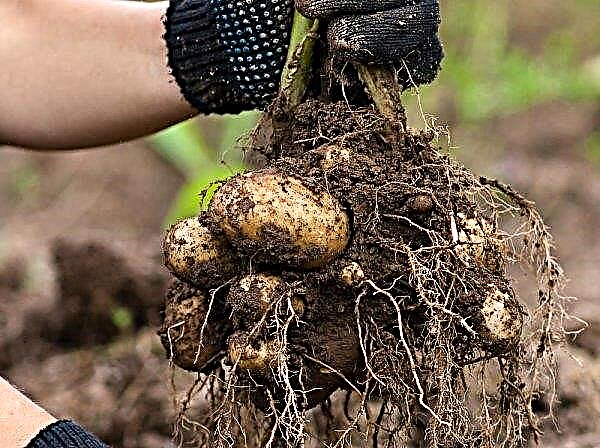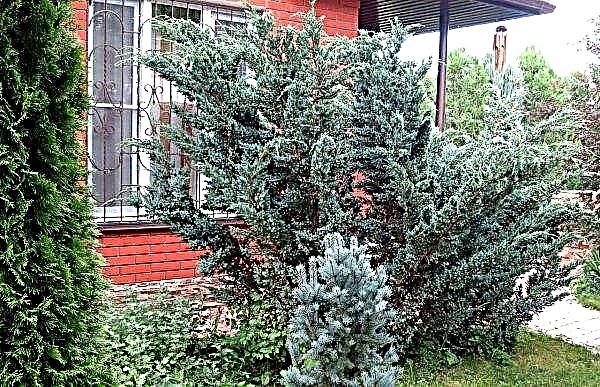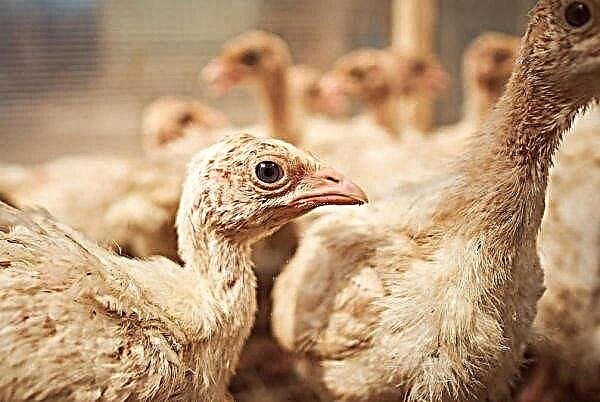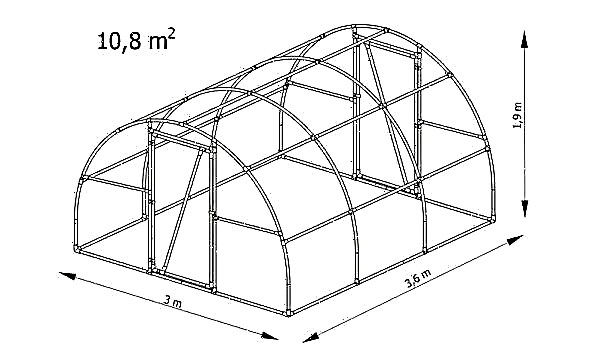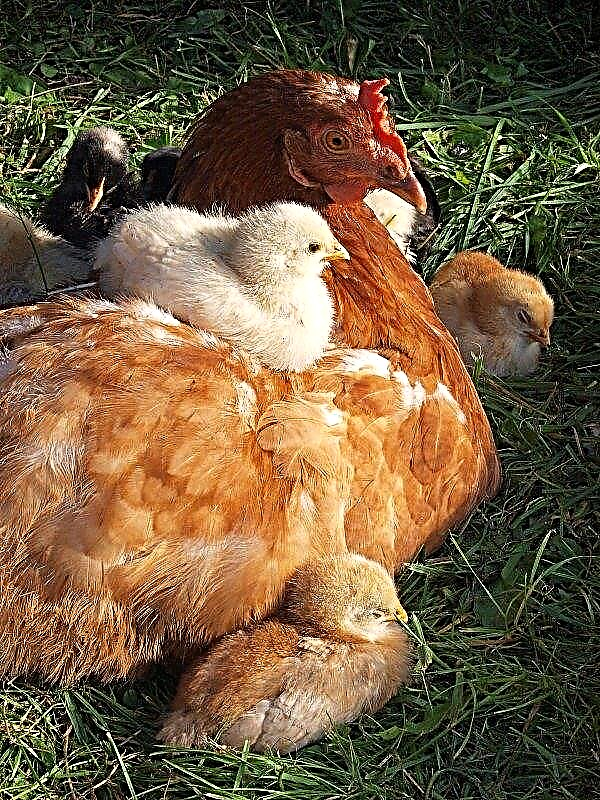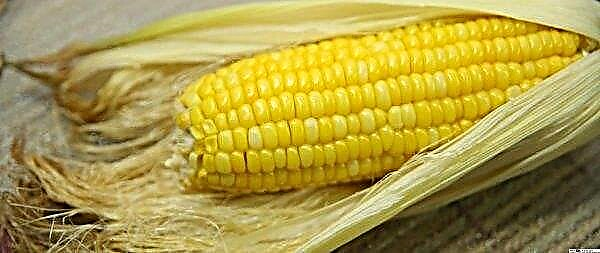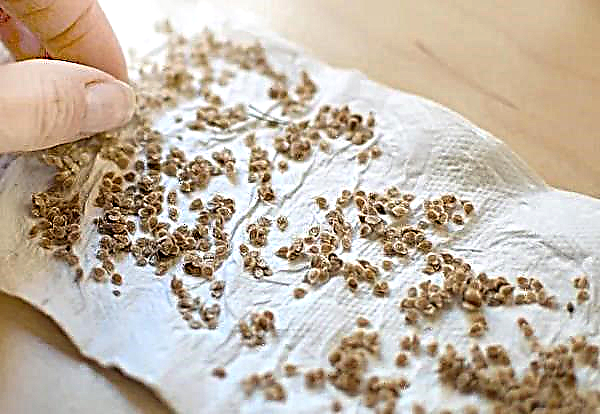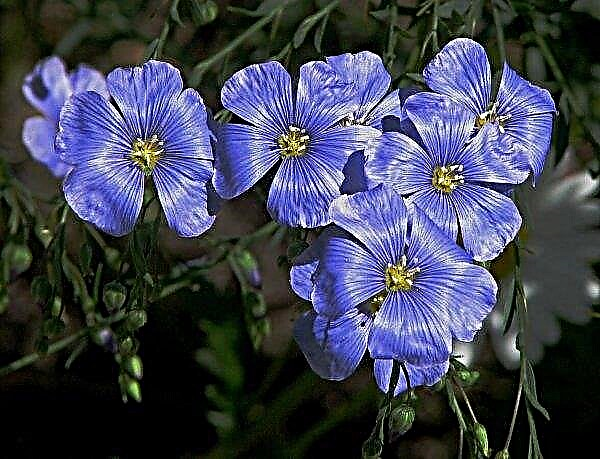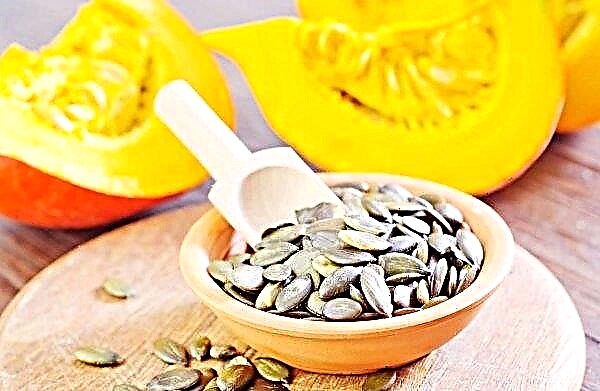The group of decorative and deciduous cultures is so vast that sometimes among this variety it is quite difficult to choose one plant. In the article you will get acquainted with the original indoor flower saw. It has many types and varieties, shapes and textures, among which any grower can choose those that are most suitable for the interior of the room.
Botanical description of the plant
Pilea is considered a family of nettles. This is a small compact plant with unusually beautiful foliage. It is represented by perennials, annuals and shrubs.
Distributed in tropical climates.
The main characteristics of pylea are collected in the table:
| Root system | superficial |
| Stem | 30–40 cm high |
| Leaf shape | round, oval, lanceolate, solid or notched |
| Leaf color | mottled (depending on type) |
| Inflorescence shape | axillary brush with small flowers |
| Flower color | plain |
Did you know? From Latin, the name of the flower Pilea is translated as a cap. This name was given to pylaea due to the fact that one of the tepals resembles a cap in shape.
Main types
More than 400 species of pylaea are known to exist.
At home, the following are most often grown:
- Kadye. The flower does not exceed a height of 40 cm. It has elongated oval-shaped leaves with 2 intermittent silver lines.
- Small-leaved. Compact ground cover up to 15 cm high with miniature round, coin-like leaves.
- Thick-leaved. The most popular type. It attracts attention with embossed velvety green with red leaves.
- Wrapped up. It grows to a height of 30 cm. Her leaves are rough, green with a bronze tint and dark brown veins.
- Pepermiform. A miniature look with tiny green glossy coin-like leaves.
- Lebanese. A small plant with drooping shoots and rounded silver leaves.






House growing conditions
Pilea does not require special climatic parameters for growth and development, quickly adapts to room conditions, is able to withstand short-term droughts and irregular care.
Did you know? In the wild, pylaea is pollinated by the method of "ejection" - it is able to throw fruits with seeds at a distance of 1 m or more.
Lighting
This plant needs good lighting. The light must be diffused. Direct rays of the sun are unacceptable.
The best location for pylaea is the area near the windows on the western and eastern sides. When growing near the south window, the plant must be shaded.
Ventilation
The only thing that Pilea reacts poorly to is drafts. Therefore, when conducting airing, it is necessary either to take it to another room, or make sure that it is not under air currents.
Temperature
Despite the fact that the habitat of the tropics is tropics, you cannot call it too thermophilic. The most comfortable room for her is with a temperature of +20 ... + 25 ° C. At what parameters to contain a flower in winter will depend on the species and variety. There are varieties for which it is not necessary to change the temperature indicators during the rest period. But, for example, for the peperium-like and small-leaved pylae for the winter, you need to lower the temperature to + 10 ° C, for Cadier - to + 15 ° C.
But, for example, for the peperium-like and small-leaved pylae for the winter, you need to lower the temperature to + 10 ° C, for Cadier - to + 15 ° C.
In summer, the flower can be kept outdoors, protecting from gusts of wind. It is possible to transplant in the summertime into a container or a stone flower girl in a garden located in partial shade and well protected from the sun.
Air humidity
Humidity for pylaea need increased. But there is one complication - spraying is harmful for it, the leaves lose their decorative effect. To create optimal humidity parameters, you must either use a humidifier or put a flower pot in a tray with wet pebbles, expanded clay, moss.
You can also spray nearby plants, controlling that moisture does not get on the leaves of the saw.
Important! If the saw is grown on a wet tray, it must be ensured that the bottom of the pot does not come in contact with water.
Home Care
Pilea is an unpretentious plant. To care for it, standard measures will be required: watering, fertilizing, crown formation, transplantation.
Watering
Watering is required regular and moderate. The flower does not respond well to long periods between moisturizing and waterlogging of the soil. Watering should be done when the top soil layer dries. Do not allow stagnation of water in the pan or waterlogging of the substrate, especially in winter. When moisturizing, it is necessary to ensure that water in no case falls on leaves, shoots and stems. This can damage the decorativeness of the flower, lead to burns and rot.
When moisturizing, it is necessary to ensure that water in no case falls on leaves, shoots and stems. This can damage the decorativeness of the flower, lead to burns and rot.
Unacceptable irrigation with cold hard water. For pylaea and other indoor plants, water must be defended for at least 24 hours or filtered. It should be at room temperature.
Top dressing
In order to prevent a decrease in the decorativeness of foliage, elongation of shoots, and stunting, the plant must be fed year-round with nutrients. Starting from spring and ending in October, fertilizers must be applied to the soil every 2 weeks. With the onset of the winter period, top dressing is reduced to 1 time per month.
For pylea, purchased universal fertilizers or products developed for decorative and deciduous crops are suitable. Dosage is calculated based on the instructions on the packaging.
Pruning
Such a procedure as pruning can improve the decorative qualities of the plant. It must be produced every year in the spring. Sharp, sanitized scissors remove too long, damaged, old branches. A pinch is made for the remaining branches to stimulate the formation of new lateral shoots.
Remote sections can be used as cuttings for growing young plants.
After pruning, the saw is restored easily and in the shortest possible time.
Transfer
Unfortunately, pylaea quickly lose their decorative effect. Therefore, their frequent updating is required - the cultivation of a young plant from cuttings. This procedure should be performed as the attractiveness of the flower worsens. Transplantation is carried out from the beginning of spring to the beginning of summer. Get a new pot and substrate in advance.
Transplantation is carried out from the beginning of spring to the beginning of summer. Get a new pot and substrate in advance.
You can buy soil for ornamental deciduous plants or prepare it yourself by mixing in equal parts such components:
- humus land (2 parts);
- leaf soil (2 parts);
- peat (1 part);
- sand (1 part).
The acidity of the soil should be slightly acidic, with a pH level of 5.5–6.
You need a pot with a depth of at least 10 cm. You should not buy too much capacity, this will negatively affect the decorativeness of the flower - the root system will increase intensively, and the leaves will begin to become smaller.
A step-by-step transplant technology is as follows:
- Plant to trim.
- Make a pinch of all the shoots.
- It’s good to water the earth.
- Extract the plant along with the earthen lump from the tank.
- Lay the drainage layer at the bottom of the pot - expanded clay, pebbles and other materials suitable for the purpose of water disposal, with a 1/3 layer.
- Top with a layer of soil mixture.
- Set the flower in the center.
- To fill up with the earth.
- Water abundantly.
- Put in a room with a temperature of +20 ... + 22 ° С.
 Young plants are transplanted annually, mature - 1 time in 2-3 years. Pilea can be grown in hydroponics and in containers with automatic irrigation.
Young plants are transplanted annually, mature - 1 time in 2-3 years. Pilea can be grown in hydroponics and in containers with automatic irrigation.Important! The soil purchased in the store does not require pre-treatment before planting. The substrate made by hand must be disinfected - calcined in the oven or sprinkled with a solution of potassium permanganate.
Breeding
Propagated by sawing in 2 ways:
- Cuttings.
- Seed.
Cuttings
The simplest and most popular method among gardeners. For propagation, apical cuttings are used. They are cut off throughout the year, even in the winter.
The procedure is as follows:
- Choose a subtle escape.
- Cut the cuttings from its top to 10 cm with 2-3 pairs of leaves.
- Put the stalk in water for rooting. It can be planted in a loose substrate, for example, in sand, to a depth of 5-6 cm.
- As necessary, add water, moisten the substrate.
- After the roots appear, the cuttings are placed in cool conditions for hardening for 7-14 days.
Seed cultivation
The seed method is suitable only for certain types of pylaea. It is carried out as follows:
It is carried out as follows:
- Moisten the substrate before planting.
- Seeds are placed at a depth of 1-1.5 cm.
- The container is covered with a film or glass.
- Crops are periodically sprayed from the spray gun with warm, settled water.
- Daily shelter is removed for a while for ventilation.
- After the appearance of the shoots, the shelter is removed.
- When 2 leaves appear, they pick.
- After the formation of 5-6 leaves, a transplant is organized for a permanent place.
Growing difficulties
Subject to the recommendations for planting and care, the saw is rarely when sick or infected with harmful insects. Such misfortunes can accompany it at high air temperatures, dryness in the room, excessive watering, and the absence of top dressing.
Of the diseases, a flower can infect root rot. It develops in cool conditions with waterlogging. Sick roots need to be trimmed, healthy ones should be washed with hot water, the places of cuts should be treated with activated charcoal, fungicide, allowed for indoor plants.
Then the roots need to be dried during the day and transplanted into a new pot and soil.
Important! Work with chemicals at home should be done in a well-ventilated area with protected hands and face. It is forbidden to drink, eat or smoke during treatments.
Among the pests that are dangerous for pylaea:
- Spider mite. A characteristic sign of the presence of the tick on the plant is the leaves and stems are braided by cobwebs, there are small red dots on the foliage. This parasite loves heat and dryness. To get rid of it, you need to wipe the flower with a soapy solution. With severe infection, treatments with Fitoverm, Bi-58, Karate, Iskra-M, and Actellik are needed.
- Shield. This is a small insect covered with a hard shell. It feeds on the flower juices. The first symptoms of the appearance of the scale are sticky fluid on the trunk. Destroy it mechanically - scraping with a brush. Acetic wipes are also effective, rubbing with tincture of garlic, red pepper. In case of severe infection, they resort to chemical treatment using Fitoverm, Actellik, Metafos.
- Thrips. The presence of these parasites is indicated by small holes in the leaves, brown spots, deformation of the stems. Their reproduction is facilitated by dry air. They treat the flower by spraying with the insecticides Actellik, Inta-Vir, Fitoverm, Aktara, etc.
 In addition to ailments and parasitic insects, when growing a plant, the following problems can be observed:
In addition to ailments and parasitic insects, when growing a plant, the following problems can be observed:- Lightening and fading leaves, drying out the ends of the leaves. Such changes in the appearance of the flower signal a lack of sunlight. It is necessary to change the location of the plant to a lighter.
- Leaf fall, withering stems. They talk about excessive moisture. It is necessary to reduce the volume and number of irrigations.
- Wrinkle and dry the leaves. So the plant reacts to high or too low temperatures, a long absence of watering. It is necessary to control the temperature in the room and bring it to the recommended indicators and adjust the humidification mode.
- The formation of brown, brown or yellow spots. These are sunburns. It is necessary to protect the plant from them.
- Falling leaves of the lower tier, exposure of shoots, the decay of the bush. This deterioration of the flower is a signal that it must be rejuvenated.
So, pilea is a compact houseplant that does not require special care efforts and special conditions. A variety of varieties and species allows you to plant a flower as an ampel plant and in compositions with other cultures, for example, begonia, ivy. It looks great in hanging flowerpots, on shelves, flower stands.



